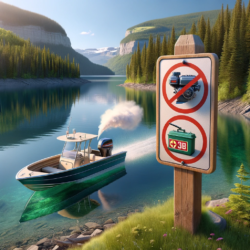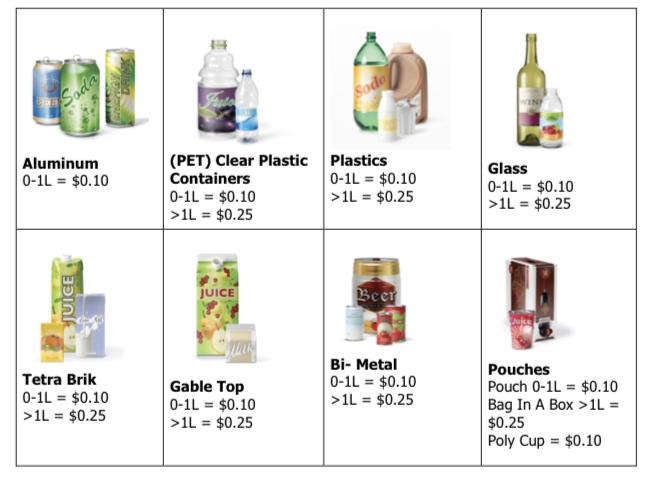Alberta’s picturesque lakes are a magnet for boating enthusiasts.
With the rise in environmental awareness, the use of 2-stroke engines on these water bodies has come under scrutiny.
This article delves into the specifics of 2-stroke engines, their environmental impact, and the regulations surrounding their use in Alberta.
Are 2-Stroke Motors Allowed on Alberta Lakes?
In Alberta, while 2-stroke engines aren’t outright banned, they must adhere to specific emission standards set by the Canadian government.
These standards aim to minimize the environmental impact on Alberta’s pristine lakes. Learn more about the regulations here
2-stroke engines, characterized by their simpler design and distinct “pop-pop” sound, operate in a two-step cycle: compression and combustion, followed by exhaust and intake.
This design allows them to be lighter and often produce more power than 4-stroke engines of the same size.
However, traditional carbureted 2-strokes release a mix of oil and unburned fuel into the water due to their oil-gasoline lubrication mix, leading to environmental concerns.
Modern 2-strokes with direct fuel injection have significantly reduced emissions.
The Environmental Implications of 2-Stroke Engines
Traditional 2-stroke engines have been popular for their power-to-weight ratio.
However, their design leads to the release of unburned fuel and oil into the water, causing pollution.
This has raised environmental concerns, especially in areas with pristine water bodies.
Modern 2-strokes, with direct fuel injection, address this issue by reducing emissions and being more fuel-efficient.
Regulations and Compliance in Alberta
Transport Canada oversees the regulations for boat engines in the country.
Engines are graded based on their emissions, with a three-star rating indicating the lowest emissions.
Manufacturers are now required to reduce evaporative emissions, ensuring a cleaner boating experience.
FAQ: 2-Stroke Engines in Alberta
- What’s the difference between traditional and modern 2-stroke engines?
- Traditional 2-strokes use a mix of oil and gasoline, leading to more emissions. Modern 2-strokes use direct fuel injection, reducing emissions.
- Are there penalties for using non-compliant engines in Alberta?
- Yes, non-compliance with emission standards can result in fines.
- How can I ensure my 2-stroke engine is compliant?
- Check the emission rating and consider upgrading to a direct fuel injection system if you have a traditional 2-stroke engine.
- Why are 2-stroke engines considered less environmentally friendly?
- Traditional 2-stroke engines burn a mix of oil and gasoline, leading to the release of unburned fuel and oil into the water, which can cause pollution.
- Are there any lakes in Alberta where 2-stroke engines are specifically prohibited?
- While there isn’t a province-wide ban, individual lakes or municipalities might have specific regulations. It’s best to check local guidelines before boating.
- How do 4-stroke engines differ in terms of environmental impact?
- 4-stroke engines are generally more fuel-efficient and produce fewer emissions than traditional 2-stroke engines because they separate the oil and gasoline, reducing the release of unburned fuel.
- Is it expensive to upgrade from a traditional 2-stroke to a modern 2-stroke or 4-stroke engine?
- Costs can vary based on the brand, power, and type of engine. However, while initial costs might be higher, modern engines often result in savings due to better fuel efficiency and fewer maintenance issues.
- How do I know if my 2-stroke engine meets Alberta’s emission standards?
- Check the engine’s documentation or consult the manufacturer. Engines compliant with Alberta’s standards will typically have an emissions rating label.
- Are there any grants or incentives for upgrading to a more environmentally friendly boat engine in Alberta?
- While specific grants can vary over time, it’s worth checking with local marine dealers or Alberta’s environmental agencies for any available incentives.
Navigating Alberta’s Waters Responsibly
For boaters in Alberta, understanding engine regulations is crucial.
By ensuring that their 2-stroke engines meet the required standards, they contribute to preserving Alberta’s waterways for future generations.
In Summary
- 2-stroke engines are known for their power and simplicity but have environmental concerns.
- Modern 2-strokes with direct fuel injection are more environmentally friendly.
- Alberta requires 2-stroke engines to meet specific emission standards.
- Boaters should stay informed and ensure their engines are compliant to protect Alberta’s lakes.





